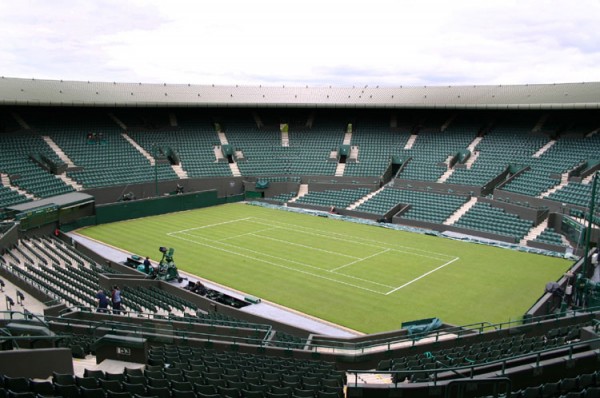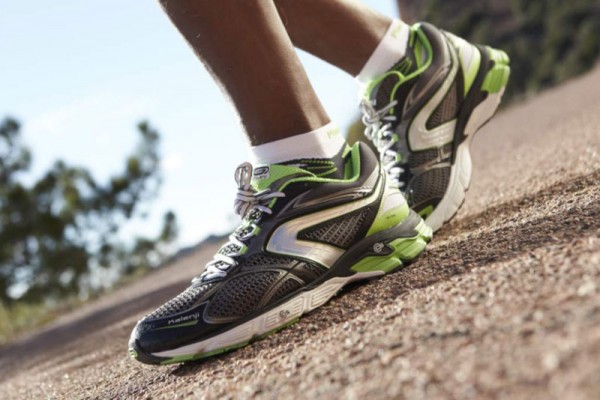 Wimbledon was this weekend and as most of us are aware Serena Williams and Novak Djokovic won the women’s and men’s titles, respectively. Wimbledon is the oldest, historic, and most prestigious of all the tennis tournaments in the world. Ignoring all of those other pretty lofty superlatives, Wimbledon is also the last major tournament to be played on grass courts. Since the late 1980s every other major tournament has switched to hardcourt or clay surfaces.
Wimbledon was this weekend and as most of us are aware Serena Williams and Novak Djokovic won the women’s and men’s titles, respectively. Wimbledon is the oldest, historic, and most prestigious of all the tennis tournaments in the world. Ignoring all of those other pretty lofty superlatives, Wimbledon is also the last major tournament to be played on grass courts. Since the late 1980s every other major tournament has switched to hardcourt or clay surfaces.
Of the four Grand Slam events in tennis only two are played on similar court materials, the Australian and US open on hardcourt, while the French Open is played on clay and Wimbledon, as we mentioned before, is played on grass. Professional tennis players have to be able to train and condition their bodies to handle the different stress and rigors that each surface provides. While the majority of us will never play tennis at a professinal level(Serena could be a fan of us here at Socks4Life.com, you never know), we can all probably relate to having exercised on different types of courts and fields.
We can break these surfaces down into two broad categories, natural and man-made, and then work our way into more detail from there. The first one we’ll go into is natural surfaces. Anyone that runs as a hobby will tell you that there’s a big difference between running on a nature trail and running down at the local track. Generally speaking natural surfaces are softer and much, much easier on your joints. Speaking as someone that’s blown out a knee that wasn’t great to begin with, running on grass or a trails is so much easier to deal with from that aspect of it. But that softness also comes along with the fact that those trails, fields, and paths aren’t perfectly flat and smooth. These surfaces are uneven and often unstable, which means you’ll work more muscles in an attempt to keep yourself stabilized. Think about the difference between running on a track and running in the sand down at the beach and how much more tiring the sand is to run in. That unevenness and instability is where all of the extra benefit of the run comes from, but it’s also where increased risk of injury does as well. The track might not be quite as much of a workout as running on the trails, but you also didn’t need to make sure you keep a focus on watching out for errant roots or holes.
So what about man-made surfaces? When we say man-made we mean asphalt, concrete, and tarmac/rubber surfaces. The first thing we can say is that concrete is bad for your body when it comes to running. Which is a shame because there are miles and miles of concrete sidewalks all across the world. The exact qualities that make it a dynamite building material, it’s durable and extra hard, make it awful for running. That extra hardness means that whenever your foot strikes it while running it hits you back just as hard. Running on concrete without taking extra precautions can shatter blood vessels, which compounds the damage because even less blood can carry oxygen to the parts of your body that need to be healed. If you have no other choice than running on concrete, make sure to wear shoes with maximum cushion. Asphalt is the second most common surface material and luckily isn’t nearly as bad for your joints as concrete. It’s not great, but it’s less hard and widely available. It does have serious problems with the fact that running on asphalt often means running the street which exposes runners to traffic, blind corners, and the effects of car exhaust on health. In an ideal world when heading down to the park or the local trail system isn’t one of the options, you’d find a tarmac or rubber surfaced track. Tarmac and rubber are much softer than concrete and asphalt and do substantially less damage to your joints. All of these materials share the similarity of being much harder and more damaging than a natural surface material, they have the advantage of being much more efficient in terms of distance covered. That damaging hardness and stability means that most of the energy you put into pushing off it with each stride is going to propel you forward making you faster and able to go further.
And what about treadmills? I didn’t put them in either surface because you don’t wander through the woods and magically finding them waiting to be ran on. Even if you did, you should avoid it. Because of the way they simulate moving forward using a rotating belt, it forces an awkward running form that uses extra force and causes a lot more strain on the body than is necessary.
If we, and by we I mean sports physiologists, had to rank running surfaces in order of most preferable to least it would go like this:
Grass – Grass is great because it has a lot of natural material to cushion your stride. The combination of the actual grass and the dirt it grows in do a lot to absorb the impact of running instead of taking it all on your joints.
Dirt trails – Dirt trails have the same advantage as grass, you just have to watch out for loose bits of debris that could cause an injury.
Rubber/tarmac tracks – The most soft and absorbing of all of the man-made surfaces. When natural isn’t available this should be your go to.
Asphalt – One of the easiest to find, but can also do some damage to your joints if you aren’t prepared for it.
Concrete – Do whatever you can to avoid running on concrete. There’s a reason they build infrastructure that needs to last out of the stuff, and it’s not befcause it promotes joint health.



